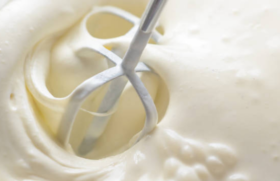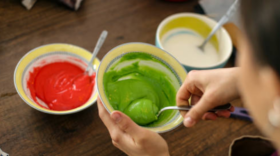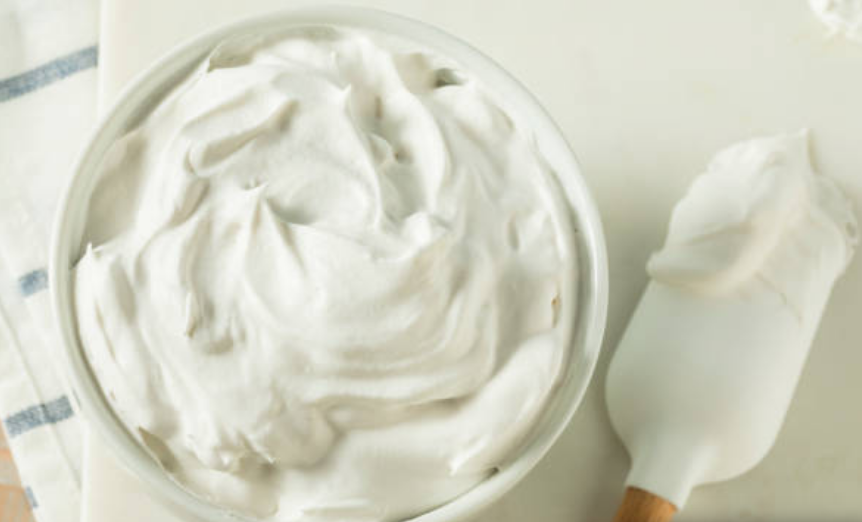Want to learn how to make frosting? When it comes to creating confectionery masterpieces, the secret often lies in the details—especially when it comes to frosting. Achieving that perfect swirl, smooth finish, or creative texture requires more than just skill; it starts with the right foundation. In this guide, we’ll delve into the crucial aspects of preparing your tools and ingredients for flawless frosting.
 Why Quality Ingredients Make a Difference – Learn How to Make Frosting
Why Quality Ingredients Make a Difference – Learn How to Make Frosting
The journey to impeccable frosting begins with the selection of quality ingredients. The butter, sugar, flavorings, and any additional components you choose contribute to the flavor, texture, and overall quality of your frosting. Opt for fresh, high-quality ingredients to elevate the taste and appeal of your creations.
Essential Tools for Every Frosting Task
Equipping yourself with the right tools is essential for successful frosting endeavors. From spatulas and offset spatulas for smooth applications to piping bags and tips for intricate designs, having a well-rounded set of tools ensures you’re prepared for any frosting challenge that comes your way.

Preparing Your Workspace for Frosting Success
Creating an organized and clean workspace is paramount to the art of frosting. Clear your countertops, gather your tools, and ensure you have ample space to maneuver. An organized workspace not only streamlines the frosting process but also allows you to focus on the creative aspects of your decorating.
Ingredient Temperature: Key to Perfect Texture
The temperature of your ingredients plays a pivotal role in achieving the desired texture for your frosting. Bring butter and other dairy products to room temperature before starting. This ensures a smooth and creamy consistency, making it easier to blend and achieve that luscious, velvety finish.
The Role of Sifting in Achieving Smooth Frosting
In the realm of baking and cake decorating, achieving smooth, velvety frosting is an art form that goes beyond taste. The visual appeal of a flawlessly frosted cake is often as important as its delectable flavor. One key technique that contributes significantly to the texture and aesthetic quality of frosting is the often-overlooked art of sifting.
Sifting involves passing dry ingredients, such as powdered sugar, through a fine mesh sieve to break up clumps, remove impurities, and aerate the substance. In the context of frosting, the primary ingredient that benefits from sifting is powdered sugar, also known as confectioners’ sugar.
One of the primary advantages of sifting is the introduction of air into the powdered sugar. As the sugar passes through the sieve, it becomes lighter and fluffier. This aeration process contributes to the creation of a smoother, lump-free frosting. The lightness achieved through sifting ensures that the powdered sugar incorporates seamlessly with other ingredients, preventing the formation of clumps that might otherwise disrupt the smooth consistency of the frosting.
Powdered sugar has a tendency to form lumps during storage or transportation. Sifting is an effective method to break down these lumps and create a fine, uniform texture. The removal of impurities and any foreign particles ensures that the frosting maintains a consistent and appealing appearance.
For those who indulge in the art of cake decorating, especially with intricate piping designs, sifting plays a crucial role in preventing clogs in piping bags. The fine particles obtained through sifting are less likely to get stuck in the narrow tips of piping bags, allowing for a smoother and uninterrupted flow of frosting during the decorating process.
Beyond its impact on texture, sifting also contributes to an even distribution of flavors. It ensures that any flavorings or additives mixed with powdered sugar are uniformly spread throughout the frosting. This results in a balanced and harmonious taste experience, with no pockets of intense flavor that might arise from uneven distribution.
Sifting Tips for Perfect Frosting:
1. Use a Fine Mesh Sieve: Invest in a fine mesh sieve to sift powdered sugar. This ensures that the particles are small and uniform, contributing to a smoother texture.
2. Sift Over a Bowl: To catch the sifted powdered sugar and avoid a mess, sift it directly over a mixing bowl. This allows for easy incorporation into the other frosting ingredients.
3. Sift Twice for Extra Smoothness: For an extra level of smoothness, consider sifting the powdered sugar twice. This additional step can make a noticeable difference in the final texture of your frosting.
4. Combine Sifting with Creaming: To achieve the ultimate smoothness, combine the sifted powdered sugar with softened butter and other ingredients. Creaming these together ensures a velvety consistency that glides effortlessly over your cake.
Sifting is a small yet powerful technique that significantly impacts the outcome of your frosting. The incorporation of air, the elimination of lumps, prevention of clogs, and enhancement of flavor distribution are all key elements that contribute to the overall success of achieving a smooth and visually appealing frosting. So, the next time you embark on a baking adventure, don’t underestimate the transformative power of sifting in creating frosting perfection.
Mastering the Art of Application: Techniques for Perfect Frosting
Now that your foundation is set, let’s explore the techniques that will take your frosting game to the next level.
Smooth Operations: Techniques for Even Frosting Application
Achieving a flawlessly smooth finish requires precision and patience. Use an offset spatula to apply a thin layer of frosting, creating a “crumb coat” to seal in any loose crumbs. Allow it to set before applying the final layer for that professional, polished appearance.
Piping Like a Pro: Tips for Mastering Piping Bags
Piping adds a level of sophistication to your creations. Invest time in mastering different piping techniques using various tips. Practice the classic swirl, rosettes, and intricate patterns to enhance the visual appeal of your baked goods.
Creative Texturing: How to Add Visual Flair to Your Frosting
Experiment with creative texturing techniques to add visual interest to your frosted treats. Whether it’s using a comb, a fork, or a specialized texture tool, incorporating patterns and designs elevates the aesthetic appeal of your desserts.
 Coloring Your Frosting Without Compromising Consistency
Coloring Your Frosting Without Compromising Consistency
When adding color to your frosting, opt for gel or powdered food coloring. These concentrated options allow you to achieve vibrant hues without altering the consistency of your frosting. Gradually add color until you reach the desired shade.
Preserving Perfection: How to Store Your Frosted Creations Properly
Once your creations are perfected, proper storage is essential. Keep frosted treats in an airtight container in the refrigerator to maintain freshness. Bring them to room temperature before serving to ensure the optimal texture and flavor.
In conclusion, flawless frosting is a delightful combination of quality ingredients, meticulous preparation, and skillful application. By paying attention to the details and mastering these techniques, you’ll elevate your frosting game and create delectable treats that not only taste exquisite but also look like works of edible art.

